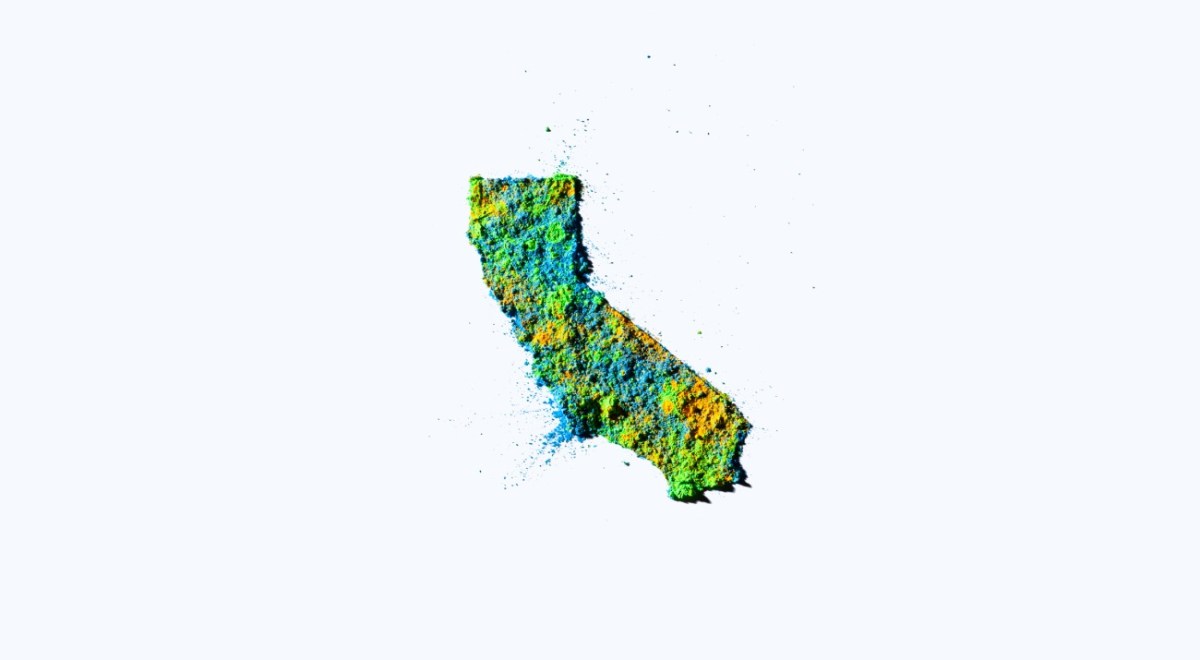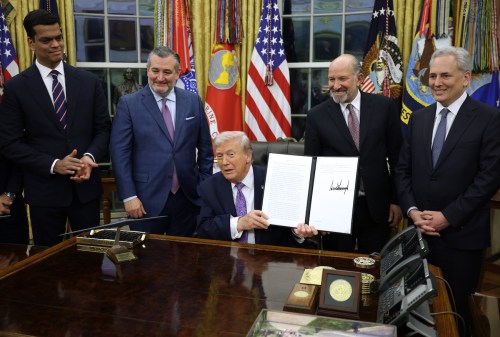Federal digital equity grants frozen days after California opens applications

California’s technology bureau last week announced it’s opened applications for a $50 million program designed to improve digital literacy, drive workforce training and bring internet connectivity to more residents in the state. But the program’s future is unclear after the Trump administration this week confirmed it had frozen funding for $2.7 billion in digital equity grants.
California’s funding comes from the National Telecommunications and Information Administration’s $1.44 billion Digital Equity Capacity Grant Program. The application notice arrived just days before The Free Press on Tuesday reported that federal funding for that program and others has been frozen as part of a new investigation into racial discrimination by the federal government. StateScoop has not been able to confirm the funding freeze.
California’s announcement also comes as federal agencies reconfigure the much larger Broadband Equity, Access, and Deployment program, and after at least one state voluntarily paused its own digital equity grants. The money for California’s digital equity grants comes from a $70 million tranche of funding the state received from the Digital Equity Act, one sliver of the $1.2 trillion Infrastructure Investment and Jobs Act.
“Through this $50 million investment, we’re doing a lot more than expanding internet access — we’re investing in people by working hand in hand with our local and statewide partners to close gaps in digital literacy and open doors to education, jobs, and opportunities,” Liana Bailey-Crimmins, California’s chief information officer, said in a press release.
Bailey-Crimmins told StateScoop last year that the state’s broadband and digital literacy training efforts include plans to develop an 8,000 mile broadband network to ensure the nation’s most populous state can offer its residents ubiquitous connectivity. She claimed that roughly 20% of California’s 39 million residents lacked broadband access.
According to the Public Policy Institute of California, 95% of Californians have internet access at home, while 85% have connections meeting the federal definition of broadband. The institute also found that 95% of households with school-aged children have a desktop, laptop or other computing device at home.
California’s grants announcement contrasts with one made in Texas last month that the state was pausing all funding tied to the NTIA’s State Digital Equity Capacity Grant Program. Texas officials said they were awaiting clearer guidance from the federal government amid the Trump administration’s “realignment” of priorities.
In addition to scrubbing the federal government of all programs and verbiage associated with diversity, equity and inclusion, President Donald Trump’s secretaries have also sought to streamline various programs. Commerce Secretary Howard Lutnick last month announced he was exploring how to eliminate “pointless requirements” and “woke mandates” in the $42 billion BEAD program. Separately, a House bill that would revamp the program is pending.
“[T]he Department is exploring ways to cut government red tape that slows down infrastructure construction,” Lutnick said in a press release last month. “We will work with states and territories to quickly get rid of the delays and the waste. Thereafter we will move quickly to implementation in order to get households connected.”
His announcement was met with mixed reviews, some claiming that the Joe Biden administration had needlessly complicated the program, which had led to three years of planning without any new connections to homes or businesses. A wireless industry group supported the changes, claiming that the old program unfairly favored fiber optic connections over cheaper technologies.
But while Lutnick’s proposal is largely advertised as a way to accelerate deployment, some analysts have claimed that resetting the program’s contracts will set back state deployments another year. One of those is Drew Garner, director of policy engagement for the Benton Institute for Broadband & Society, who said freezing the equity grants is yet another instance of the administration slowing broadband deployment as it prioritizes politics.
“They’re slowing down the programs. They’re sitting on the BEAD money. They could have shovels in the ground today, but for what Sec. Lutnick is doing,” Garner said. “It’s because of a word. They have this phobia. Purely to make some political point, they are taking away people’s programs for job skills, cybersecurity, health care.”
As for the criticism that the program has taken three years, Garner argued that the BEAD program didn’t begin in earnest until June 2023, after the Federal Communications Commission had completed its new maps of where broadband was available and where it was missing, a critical step for a project designed to fill gaps in service.
Garner said BEAD was also slowed by a well-advised decision to place the program in the hands of the states, which are more familiar with their needs and service providers than the federal government is. When the 2021 infrastructure law was passed, roughly half of states didn’t have statewide broadband offices in place, and creating them, as with most things in state government, took time.
“All past federal broadband programs had not managed to solve this problem, so we went with a state-based approach because they’re closest to the ground. They understand the providers and they’re able to design programs that are uniquely custom fit for their area,” Garner said. “For a project of this scope, it’s worth taking the time to get it right.”
Corrected April 10, 2025: This story was corrected to accurately reflect the timeline of events. California’s announcement that it had opened applications for the digital equity grants was made on April 1, not April 9.






